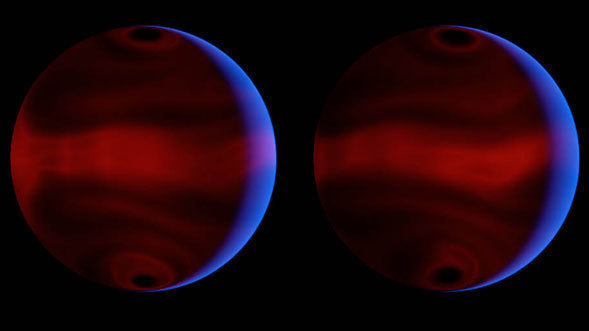Tour of Planet with Extreme Temperature Swings
Science Animations Video • June 4th, 2009 • ssc2009-02v1
This animation shows a computer simulation of the planet HD 80606b from an observer located at a point in space lying between the Earth and the HD 80606 system. The animation starts 2.2 days before the moment of close approach and ends 8.9 days later. The blue areas are reflected starlight (the blue color arises mainly from absorption by sodium and potassium in the planetary atmosphere). Red regions are areas of the planet that are glowing with their own intrinsic heat.
The point of closest approach -- and maximum heating -- occurs about 4.5 seconds into the animation. As the planet whips around the star, we see the evolving thermal storm patterns across its unilluminated side. The planet's transit behind its star (as would be seen from Earth four seconds into the animation) is not shown in this simulation.
These theoretical models allow astronomers to better understand weather patterns on distant planets. While direct telescopic observations of the atmospheres of such worlds may be many decades away, such simulations give us a clue to what we may see when it becomes possible.







